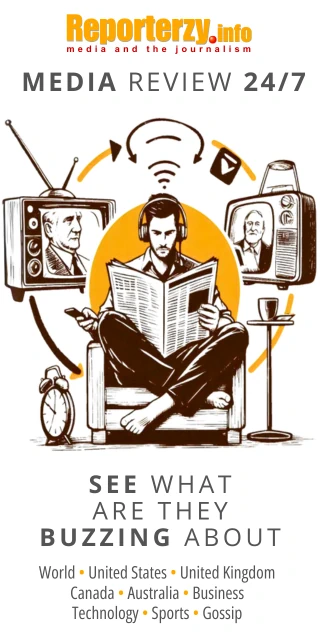 illustration: DALL-E
illustration: DALL-EFor three years, the percentage of internet users paying for digital news has hovered around 18 percent. Authors of the "Digital News Report 2025" published by Reuters surveyed 94,943 people in 47 countries and saw no surge despite the pandemic and information wars. The share of subscribers to journalistic content was 17 percent in 2023, 18 percent in 2024, and again 18 percent in 2025. Nic Newman from the Reuters Institute, author of the media economy chapter, notes several important observations:
- 18% of global internet users pay for digital news content
- +1 p.p. total growth since 2023
- 13% of women report subscribing, 22% of men
- 29% of paying users cancel after the first year
- 41% of respondents consider prices "too high"
Researchers explain the stagnation with a mix of psychology and finances. Readers still treat news like air - they need it, but prefer not to pay. The "Digital News Report 2025" recalls an anecdote from Spain, where the newspaper "El Pais" doubled its number of premium articles, yet the share of paying readers rose by just half a percentage point. The newsroom gained thousands of subscribers, but the total internet audience grows faster than the subscriber base, so the global average remained unchanged.
News sales growth is also slowing in the US. In 2021, the "New York Times" attracted 8.4 million paying online readers. In 2025, the annual figure reached 10.2 million, but growth slowed from 40 percent to 8 percent in 12 months. Nic Newman highlights that the paper sustains its scale thanks to bundles with games and cooking recipes, not pure news.
Scandinavian exception and wallets clashing with paywalls
Norway stands out as a leader in paid content. The report`s authors recorded 42 percent of users paying, over twice the global average. In Sweden and Finland, the rate exceeds 30 percent, and Denmark follows with 28 percent. Researchers note that Scandinavians trust the media, and the local VAT on digital press is zero.
The first wave of Scandinavian paywalls began in 2013. Publishers introduced payments gradually and later offered discounts for students. The newspaper "Aftenposten" reports that 71 percent of "newcomers" keep their subscription for over a year. Sweden`s "Dagens Nyheter" earns 58 percent of its revenue from digital payments by combining subscription with audiobook access.
| Country | Paying Share 2025 | VAT on Digital Press | Bundle Offer |
|---|---|---|---|
| Norway | 42% | 0% | News + lifestyle |
| Sweden | 34% | 0% | News + audiobooks |
| Finland | 31% | 0% | News + word games |
| Denmark | 28% | 0% | News + podcasts |
| Germany | 21% | 7% | News + PDF magazines |
Experts point out that VAT rates can raise or lower the entry barrier. In Germany, the 7 percent tax makes subscriptions more expensive, while Greece`s 24 percent is nearly prohibitive. The Reuters report shows Greek media did not pass the 7 percent paying mark due to fiscal obstacles.
Do you trust AI-created news? You might have NO CHOICE 👇
Newsrooms are responding creatively. Croatian portal "Jutarnji" sells a monthly bundle with a streaming service at 25 percent less than the streaming alone. Spain`s "La Vanguardia" adds coffee coupons for a chain of cafes. The report`s authors note that readers like bonuses, and the cost is covered by a business partner, so the publisher does not lose margin.
A tough market for paid content
Media economics in India, Nigeria, and Brazil differs from Oslo or Stockholm. The "Digital News Report 2025" shows Brazil with 17 percent paying users, India with 11 percent, and Nigeria with just 6 percent. High mobile data costs and dominance of free platforms hinder sales.
- 17% of Brazilians pay for online news
- 11% of internet users in India do the same
- 6% of Nigerians pay for a subscription
- 3× cheaper is monthly internet in Norway than in Nigeria
- 2.2 billion WhatsApp users consume news without paywalls
Publishers try to bypass barriers with micro-payments. India’s "The Hindu" offers digital coins: one click costs 5 rupees per article. Brazil’s "Folha de Sao Paulo" experiments with a daily rate of 0.99 reais, and Nigeria’s "Premium Times" distributes ussd codes to allow payments without credit cards. Authors of the "Digital News Report 2025" emphasize that micro-payments work in mobile, prepaid societies, but a high registration barrier discourages users.
The report recalls the example of Kenya’s "M-Pesa" platform, where users buy news via SMS. After a year of testing, transactions rose by 63 percent, but the average basket was only $0.15. Income grows slowly while production costs remain high. The "Digital News Report 2025" suggests that newsrooms combine micro-payments with native ads to reduce financial risk.
How to encourage paying for content? Three pillars of growth
Tablets and smartphones play a double role. On one hand, they simplify single-article purchases, on the other hand, they intensify competition, because algorithms suggest free alternatives. In Nigeria, the "Opera News" app aggregates local portals and delivers articles offline, bypassing both paywalls and costly data. As a result, readers avoid subscriptions and publishers lose a point of potential growth.
Reuters Institute analysts predict the paid content market will grow slowly. The outlook is based on three pillars: micro-payments, hybrid bundles, and flexible VAT. Publishers are already testing quick click-payments worth just a few cents, as younger audiences avoid subscriptions. Another lever will be "all-in-one" packages combining news, video streaming, and e-commerce discounts.
The third boost may come from tax policy. Scandinavia shows that zero VAT increases willingness to pay even during inflation. If more governments remove tax barriers, the subscription model could regain momentum, and the global paying share may reach as much as 25 percent before 2030.
Digital News Report 2025 was created through collaboration between the Reuters Institute for the Study of Journalism and YouGov. The study included 94,943 internet users across 47 countries, surveyed online in January-February 2025. Results were weighted to reflect the demographic structure of internet users in each country. The full report is available for free on the Reuters Institute website.
COMMERCIAL BREAK
New articles in section Media industry
Advertising market 2025. Poland, Europe and the World
Marcin Grządka
The global advertising market is growing by 8.8% in 2025 and will reach a value of 1.14 trillion dollars. The industry result in Europe records slightly lower dynamics, at the level of 5.8%. In this comparison, Poland performs clearly above the average. We will record an increase of 8.9% this year and a value of 18.56 billion PLN - estimates WPP Media in the annual report "This Year Next Year".
The print media market 2025. Three global trends
Krzysztof Fiedorek
The market value is 359.53 billion dollars, yet the erosion is visible to the naked eye. The decline for newspapers will amount to -2.3 percent. Despite this, print retains strength: it generates 76 percent of subscription revenues and enjoys 82 percent consumer trust. The future of the industry is defined by hybrid strategies and niche specialization.
Journalism in the age of AI. Why people prefer humans over machines
Krzysztof Fiedorek
Only 12% of people accept news created solely by AI, while 62% prefer those written by humans. At the same time, only 19% notice labels indicating the use of artificial intelligence, while younger audiences ask AI to explain the content to them. These are the findings of the Reuters Institute report on artificial intelligence in media.
See articles on a similar topic:
Pseudo-democracy and Media - A Few Reflections
Grzegorz D. Stunża
Every four years, citizens are served elections, which are certainly not free. Polls replace part of the electoral process, shaping opinions and voting preferences.
Disinformation and Fake News. Experts Discuss Challenges for Journalists
RINF
The pandemic, followed by the war in Ukraine, triggered a massive wave of disinformation in media and social channels. Experts at the Impact’22 Congress in Poznań and the European Economic Congress in Katowice discussed effective strategies to combat disinformation.
We Trust AI-Generated Fake News More Than Human-Created News
KrzysztoF
Generating and spreading misinformation with AI can negatively affect various areas of life, including global healthcare. To examine how AI-created text impacts the comprehension of information, researchers from the University of Zurich analyzed tweets generated by GPT-3.
Who Reads the Press? Studies on Credibility, Reach, and Effectiveness
Sylwia Markowska
Press for advertising clients is an effective medium for building brand trust, fame, and popularity. According to global studies, it is one of the media with the highest return on advertising. Data collected by Polskie Badania Czytelnictwa (Polish Readership Research) indicates that the press also has exceptionally high ad visibility rates, as reading requires full concentration on content.






























